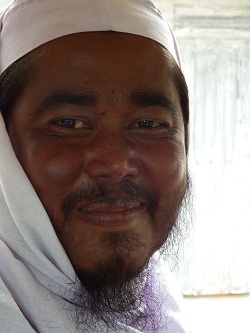Shared Information = Sustainability (Survivability): Group fighting leprosy makes inroads through mutual support, self-help groups and loans
Leprosy is endemic in the poorest districts of Bangladesh. Last year, 3,140 people were newly diagnosed, of whom 166 (5 percent) were children and 340 (11 percent) were registered with grade 2 disabilities (visible deformity or damage).
Despite the integration of leprosy into the government health system, nearly 80 percent of the cases are diagnosed and treated by the non-governmental partners. Many more people are already living with permanent disabilities caused by the disease, or have not yet been diagnosed.
A situation analysis conducted from January to June 2014 by Lepra (where the author is employed) and other partners in collaboration with icddr’b, emphasised that many cases are missed because of the passive method of detection; recording and reporting systems were the major weakness at all types of health care centres and there is a lack of uniformity. Delays in diagnosis are caused by the lack of both skilled government health staff and outreach activities, but the skills of leprosy programme-specific staff were found to be good.
An increase in health education and information to increase awareness could avoid delays in seeking initial help and diagnosis. There is a need to emphasise the urgency of diagnosis and treatment so that people can be cured before any disability occurs. Some are even incorrectly diagnosed because they seek help from homoeopathy practitioners or non-specialist clinics.
Community volunteers trained by Lepra, especially those who have themselves been cured of leprosy, are invaluable messengers to their peers in remote villages. Distribution of fliers is one method they use, but in areas where literacy levels are low the personal contact, conversations and demonstration of symptoms is an even more effective way of imparting knowledge and encouraging people to come forward for help.

Self-help groups of six to eight people (all affected by leprosy) not only offer mutual support, but also receive training in self-care, skills to rebuild lives and incomes and life skills such as how to open a bank account and manage group finances. Members become confident to voice their views and demand their rights through appropriate channels. Last year, Lepra worked with 155 self-help groups with 1,069 members. Over the past three years, beneficiary income has increased by one-third in Bogra. By working with self-help groups, Lepra ensures that the learning will be shared and will continue on to other people in the community.
This approach is highly cost-effective. When a group has been running successfully for one year, Lepra gives a small grant which can be used to give repayable loans to group members. This approach can be extended to people affected by other neglected diseases.
Afshar, age 50, was diagnosed with leprosy seven years ago. Through his self-help group, he used his first loan to rent a small area in the middle of a paddy field where he has cultivated a vegetable garden. This not only provides okra, peas and other food for his family, but he sells the surplus. A second loan allowed him to buy a cow for milking and he has made enough profit to buy a second cow.
Another sustainable activity with wide-reaching effects is community health education. Specially equipped vans, with trained staff, travel to remote villages and set up at a local market or meeting place. Through films, theatre, puppet shows, posters and announcements, information is shared and people have an opportunity to discuss problems and worries with staff who encourage them to seek a diagnosis and treatment.
We must continue to listen to people who are affected by leprosy to identify and implement the most effective means of raising awareness and sharing information in their own and other communities.
Anne Kiely is communications officer with Lepra, based in Colchester in the UK. She visited Bangladesh in August 2014 and met both of the people about whom she writes in this post.
- Categories
- Agriculture, Education, Environment, Health Care
